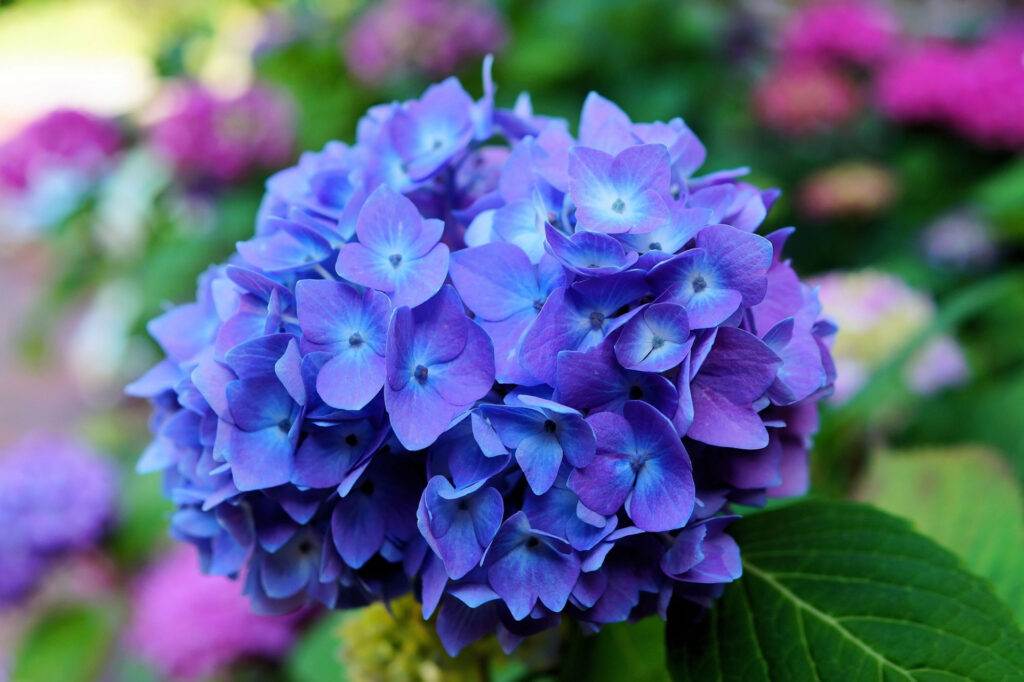By Deborah J. Benoit, UVM Extension master gardener
Do you wish you had more of your favorite plants in your garden? By propagating new plants from those already there, you can have additional perennials for free.
The easiest method to propagate perennial plants is by rooting cuttings, either in water or in soil. Catmint and herbs such as oregano are good choices early in the season or at anytime to overwinter favorite herbs indoors. Using sharp, clean scissors, take cuttings 6 to 8 inches long. Put them in water immediately so they don’t dry out while you’re working.
Prepare the cuttings by removing any flowers or buds. Remove lower leaves, leaving only two to four at the top. Trim the bottom on an angle right beneath where a leaf was attached to the stem (called a node).
Place each cutting in a container of room-temperature water. Be sure at least one to two nodes are beneath the surface of water, but no leaves are. Place the container in indirect sunlight, changing water weekly. Once multiple roots form and are at least an inch long, pot up using a good quality potting mix.
Some cuttings, such as hydrangea, root better in soil. Treat the bottom of a prepared cutting with rooting hormone. Using a pencil, make a hole in moist potting mix. Insert the cutting and carefully press soil around it. Water lightly.

Hydrangeas are best rooted in soil rather than water.
Cover the container with a plastic bag to help retain moisture. Vent the cover if excess moisture builds up on the plastic. To check progress, gently tug on the cutting. Resistance will indicate roots are forming.
Air layering is a method that works well with woody plants such as forsythia and lilacs. Select a healthy branch at least 1/4 inch in diameter. About a foot from the tip, with a clean knife, cut into the bark below a node at an upward angle.
Remove nearby leaves. Wrap moistened sphagnum moss around the wounded area, and cover with clear plastic. Tightly tie each end closed. When roots have formed, the new plant can be removed and put in soil.
For more information on air layering, visit: go.uvm.edu/layering.
If some of your perennials are looking a bit overcrowded, the time may be right to divide them into two or more smaller plants. Root division works well on clumping plants such as hosta, daylilies and ferns. A good shovel, garden fork and a sharp blade will be useful.
Carefully dig up the plant, capturing as much of the root ball as possible. Remove excess soil, and gently divide the roots into separate plants.
If necessary, use a garden fork or clean, sharp blade to divide the roots. Be sure each section contains healthy roots and foliage. Replant divisions as soon as possible to avoid damage to the roots by extended exposure. For more information on plant division, visit: go.uvm.edu/dividing.
Propagation by root division can be the most labor-intensive method of increasing your perennial plants. It is best done when the weather is milder, such as early spring or in the fall. Choose a cloudy day to help prevent roots from drying out, and work quickly once the roots are exposed.
Hostas, in particular, are easier to divide in spring when foliage has emerged but not opened. Fall-blooming perennials should be divided in the spring, and spring- and summer-blooming perennials in the fall, at least a month before anticipated ground freezing.
Whatever method you choose, there’s no denying that multiplying your perennials is a great way to add plants to your garden.




